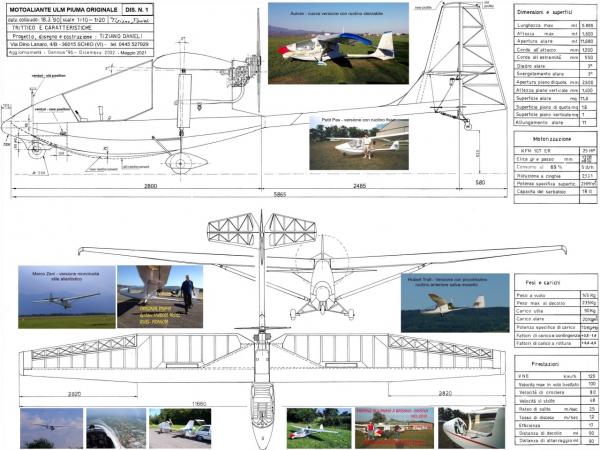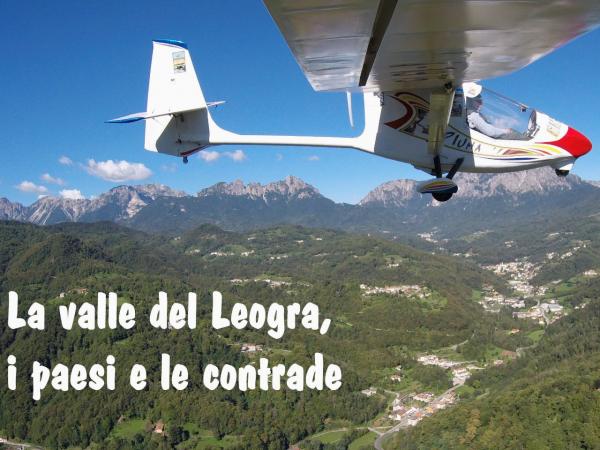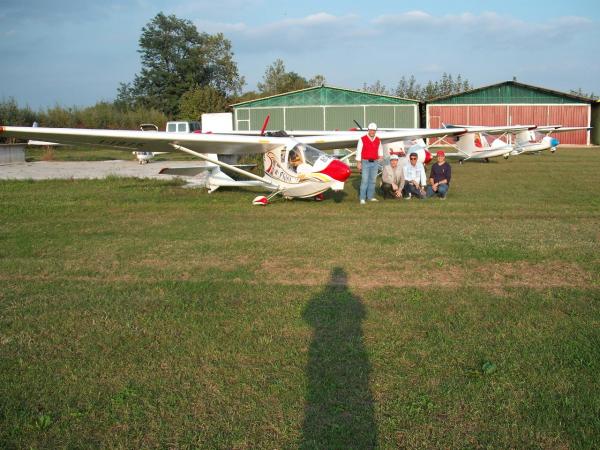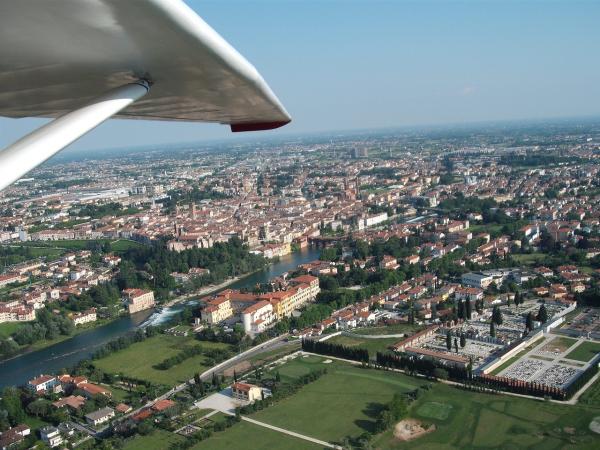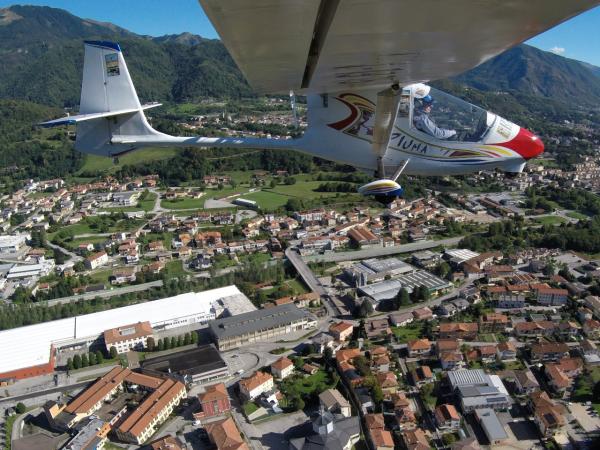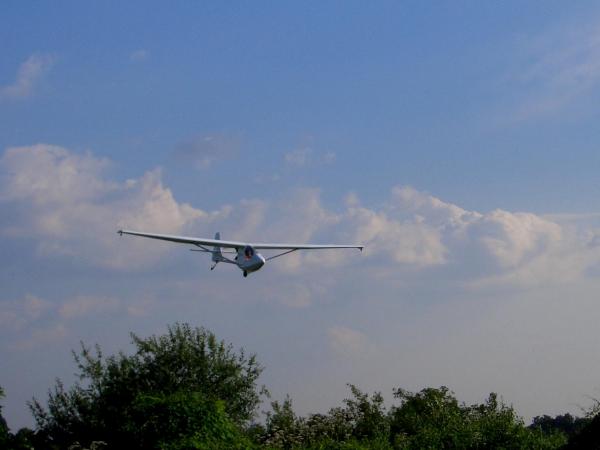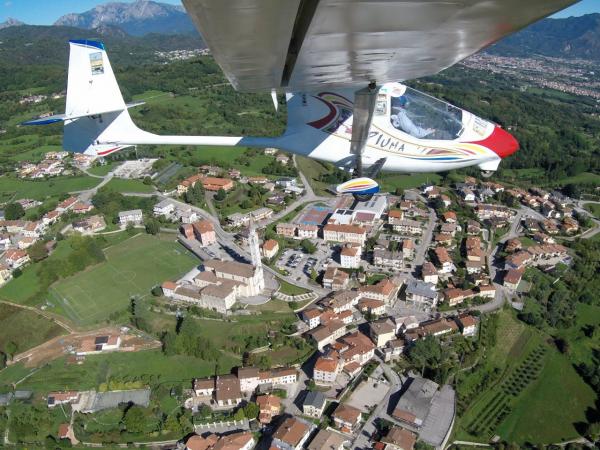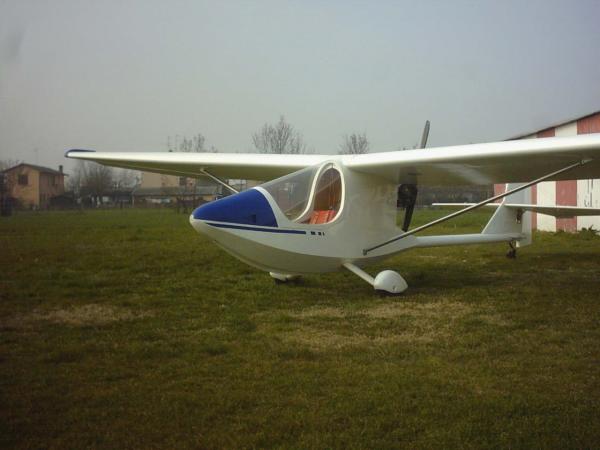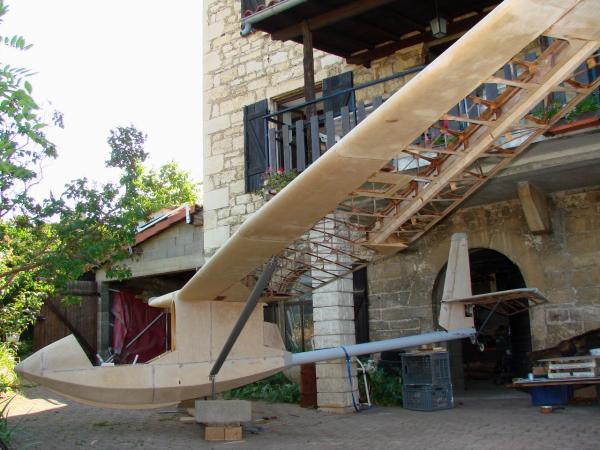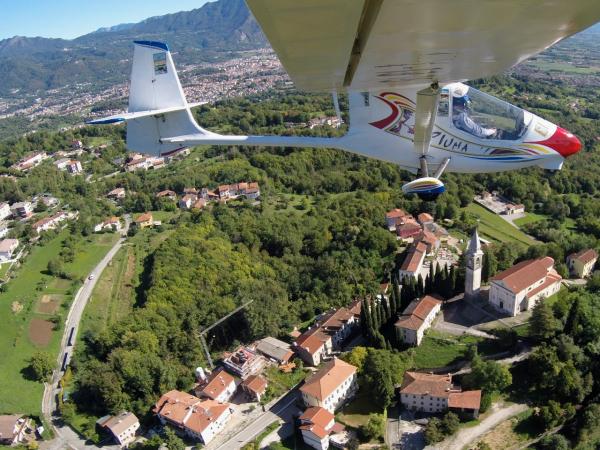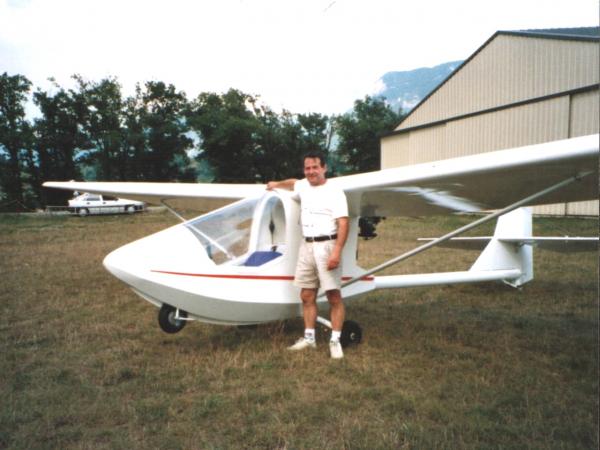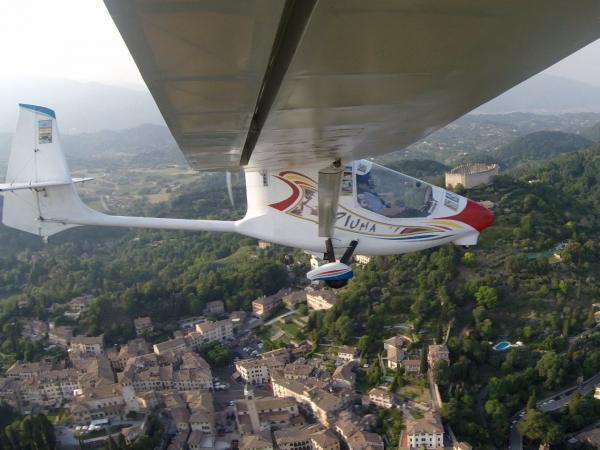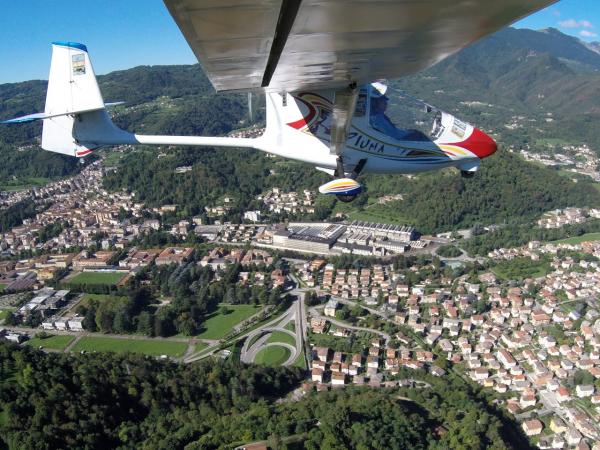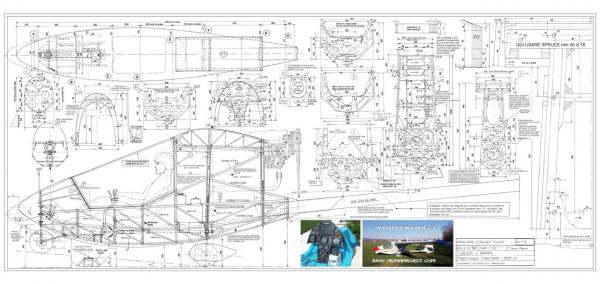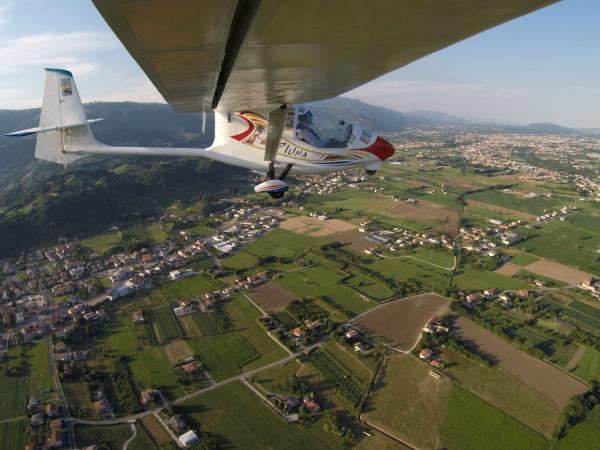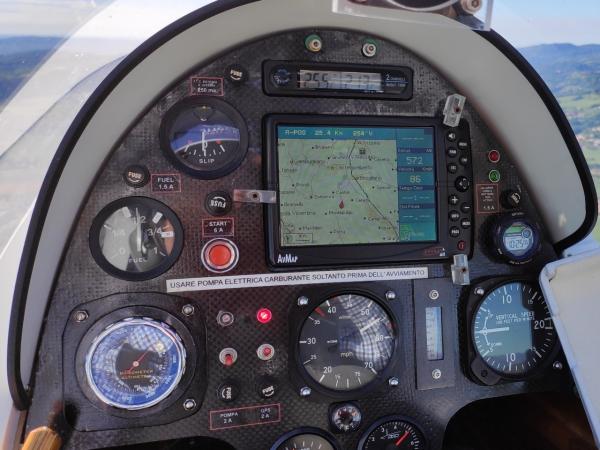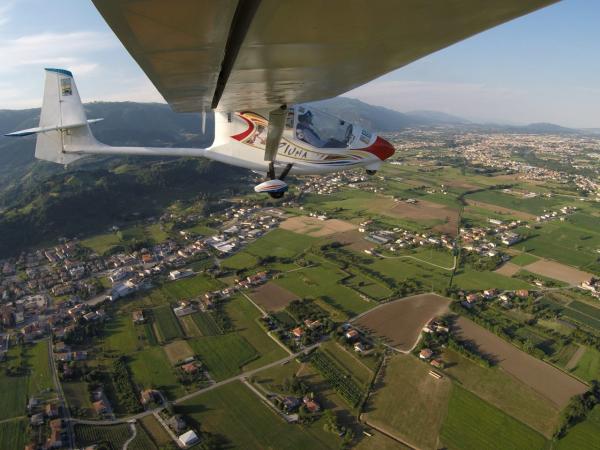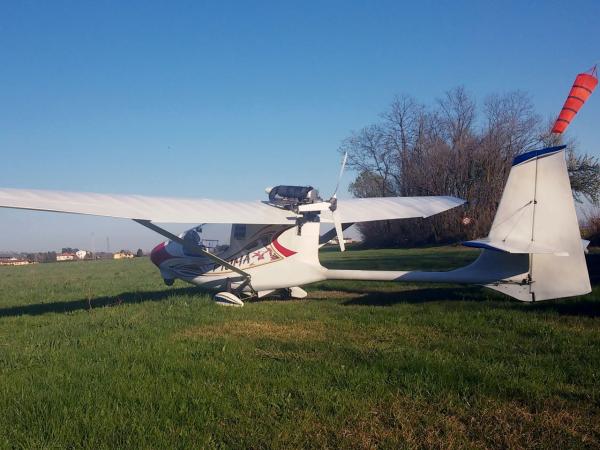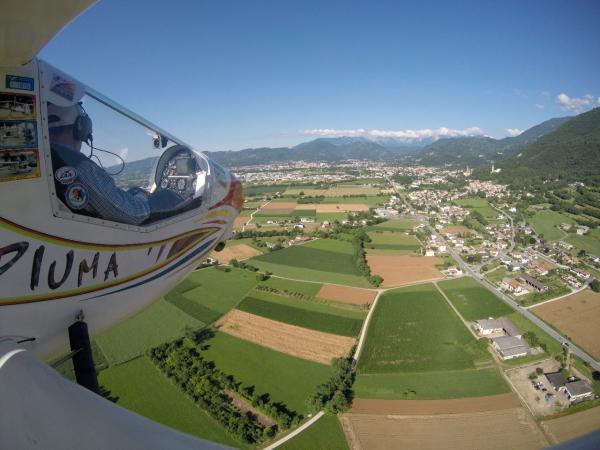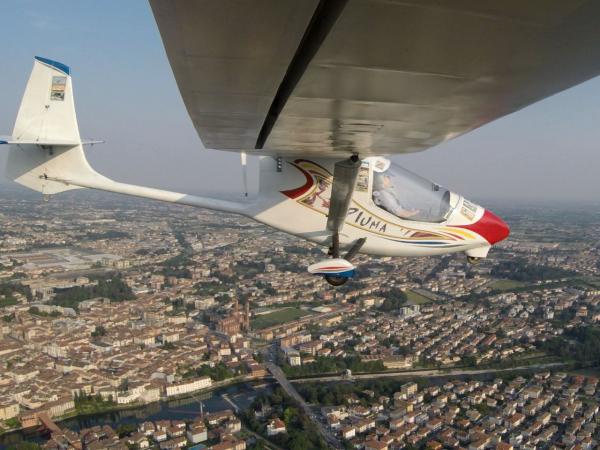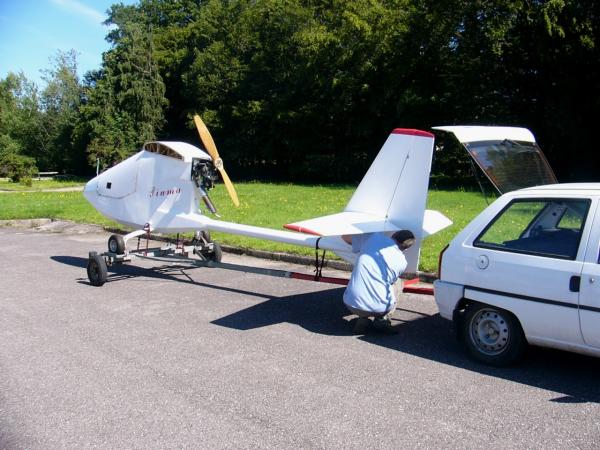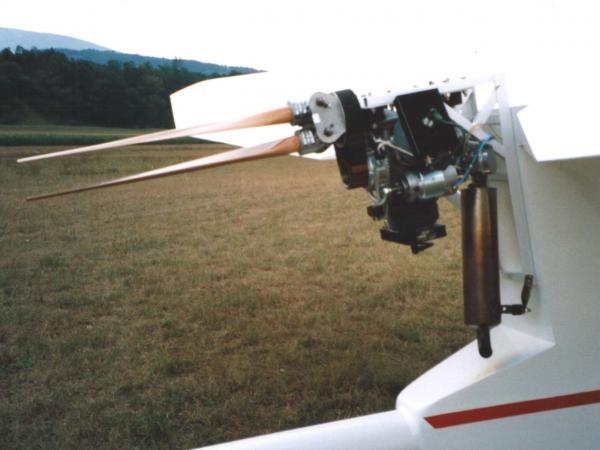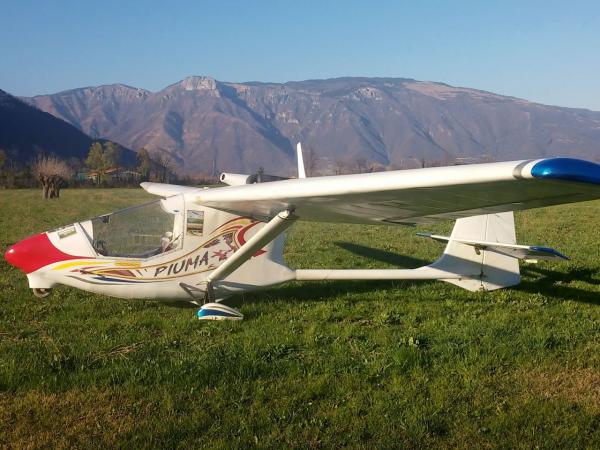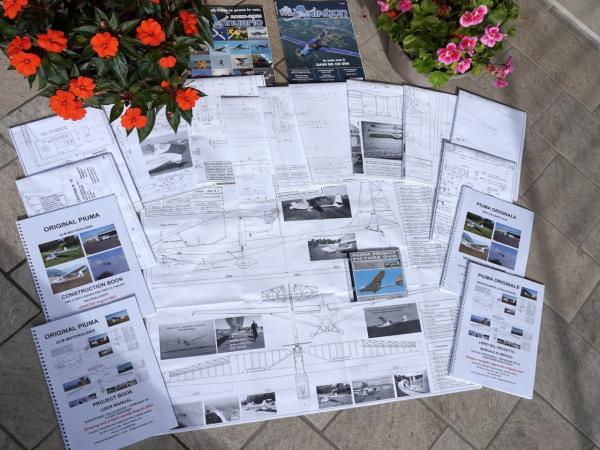Quick and easy to build, it is also the lightest; with the KFM engine, the empty weight is 320 lb and is slightly higher than the limit expected for minimal ULMs; using the latest generation small single-cylinder Italian engines or an electric motor
and limited batteries, with essential instrumentation, it could perhaps fall into this category.
The drawings, the Construction Book and the Project Book, all available also in English, were revised and improved in 2021 and are now clearer and simpler, complete with new details, graphs, tables, as well as the changes introduced
in the “restyling” of 2005 and 2014, also visible in the numerous photos on the DVD; the changes at a glance:
- Cowling droplet profiles Carbon Fiber and Epoxy main landing gear and fairing rubber band
- Formation of a new rounded fairing under the fuselage
- Rounding and re-profiling of the rear fuselage part under the engine
- Rounded reconstruction of the connection to the tail boom of the vertical plane
- Makeover with the new shape of the top of the Fin and Rudder new shape
- Realization of a new fairing rounded tail wheel
- Replacement of old drum brakes with new mountain bike disc brakes
- Trim for the tailplane
- New carbon dashboard with sun protection and new radio mount
- Cowling for the engine and new electric start, now with LiFePO4 battery
- Steerable front wheel connected to the pedals and enclosed
With these improvements the normal speed is 59 MPH with Rotax 447 engine at 4800 rpm.
Construction features
Construction plans
The Plans consist in n.12 drawings with dimensions 39” x 24” or more. The 40-page Construction Book with 80 photos and many diagrams and drawings, including the one to build the mechanism that allows you to remove the wings
and fold them parallel to the fuselage in 5 minutes by themselves (without removing them from the aircraft); there are also drawings for making the steerable front wheel. Obviously the Construction Book contains a detailed note of the necessary
materials, from birch plywood to spruce or linden fillets, as well as metal details, glues, resins, dacron cloth, etc.
The Project Book is also provided, including the Use Manual; there are 66 pages with 30 photos plus 40 graphs and tables, in which the structural calculations, the prediction of the flight characteristics, the determination of
the Center of Gravity and the methods for take-off, flight and landing are developed in an easy and understandable way.
Also included is a DVD with 3800 photos of the construction phases of the various Piuma, many photos of the completed and flying Piuma and some in-flight videos, videos which are always visible on Youtube and Facebook (see the links at
the bottom of all pages of the website).
Other useful information for the builders also about the costs
Over the last 3-4 years, material costs have increased significantly, although the self- construction allows you to build an ultralight motor glider at a fraction of the cost of a similarly equipped industrial machine with the addition of priceless satisfaction
of knowing every detail of the motor glider you're flying.
The
cost of the materials themselves (wood, tubing, sheet metal, dacron, glues, etc.), excluding the engine, engine instruments, avionics and parachute, is still modest and can be estimated at around $ 9,500 at 2025 prices.
For the engine, avionics and parachute much depends on whether you're purchasing a new or used 2 stroke engine.
The
estimate here is really difficult, but if we really wanted to hazard
a guess we could think of adding another $
6,000
for the 2-stroke engine and used instruments, or another $
12,0
00
for a new engine with engine instruments and traditional
(non-digital) complete
avionics
like those visible in the photos of the dashboards of my O
riginal
Piuma.
In
summary, we will have a forecast of a total cost between $
15,5
00
and $
21,5
00
with non-digital avionics.
The construction time can be estimated at about 900 hours, having the metal parts made by a workshop.
The tail boom is made of 6005-T16 aluminum alloy in the dimensions: external diameter of 127 mm (5”)- thickness 1.5 mm (1/16”)- length 5.2 m (205”); by adapting the fuselage fittings, it is also possible to use slightly different tubes,
as long as their bending strength is not lower than that of the tube above (bending strength values are in the Project book).


